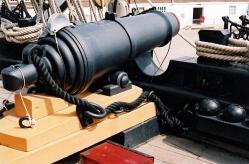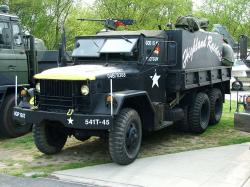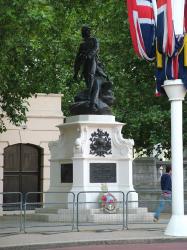Translate this Page
Marston Moor
Battle Name : Marston Moor
Date(s) : 02 July 1644
Part of : The Civil Wars of the Three Kingdoms , The 1st English Civil War ,
Outcome : A victory for Parliamentarian Forces over Royalist Forces
Type of battle : Land
Summary
Following his audacious relief of York, Prince Rupert decided to offer the Parliamentarians battle, even though Newcastle urged caution and patience.
The largest battle of the Civil Wars, began with cavalry success for both sides, although the parliamentarian cavalry under Cromwell and Sir Thomas Fairfax counter attacked and crushed the Royalists. The foot in the centre were forced from the field, and although Newcastle's 'Whitecoats' stood firm, they were cut down. This King's Army of the North was basically destroyed and the City of York soon Fell. This was the beginning of the end for the Royalist cause.
Location
6 miles west of the city of York, between Tockwith and Long Marston, North Yorkshire, England. (England)
More details
After having relieved York, the Royalists, under Charles "hot-headed" nephew Prince Rupert, unwisely offered battle to the larger Parliamentary force. The Royalist force consisted of 11,000 infantry, 6,500 cavalry and sixteen guns, a total of 17,500. The parliamentarian force, under the command of a Council-of-War including Lord Ferdinando Fairfax, and the Earls of Manchester and Leven commanding a concentration of the parliamentary West Yorkshire, Eastern Association and Scottish Armies, consisted of 18,000 infantry, 9,000 cavalry and 25 guns, a total of 27,000. Although initially successful on its left, the Royalist cavalry on both flanks was contained by counter-attacks. A Parliamentary general advance, after a bitter struggle, overwhelmed the outnumbered Royalist infantry in the centre. Although driven back, the elite foot of the Duke of Newcastle's Whitecoats (so called because their uniform was of un-dyed sheep's wool) fought almost to the last man.
The remnants of Rupert’s army disintegrated, leaving him with only 6,000 horse with which he withdrew into Lancashire.
When York fell on 16th July the Royalist presence in the north was reduced to a handful of beleaguered garrisons. Marston Moor was the largest battles and is considered by some to be one of the most influential battles of the Civil War. No accurate figures exist regarding the casualties, although estimates place Royalist and Parliamentary killed at 3,000 and 2,000 respectively. The number of wounded and desertions is unknown.
[Additional details supplied by Chris Auckland of Thomas Wentworths Regiment of the Sealed Knot]






